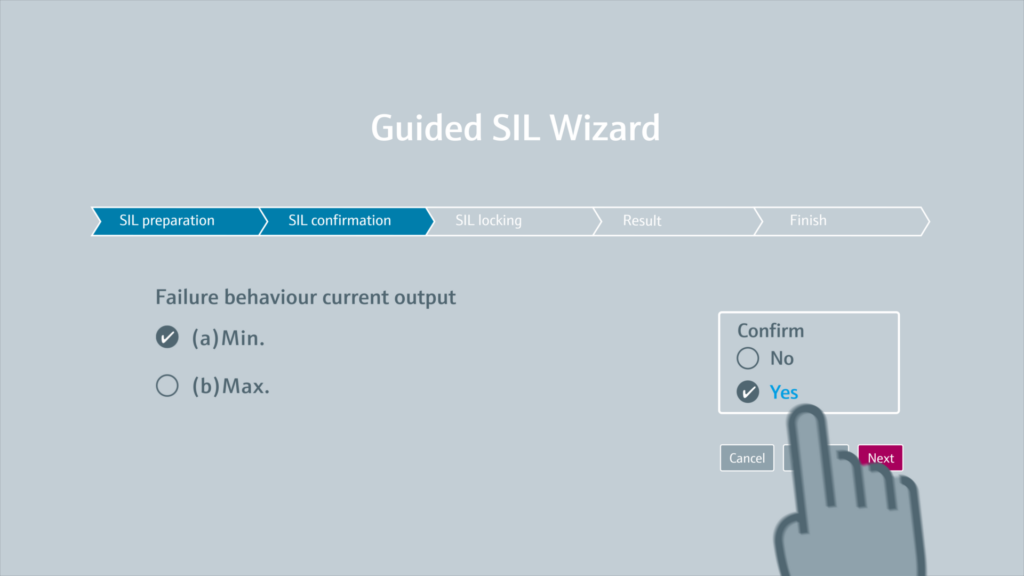Raman technology enhances LNG assessment for custody transfer
Liquified natural gas (LNG) is a versatile energy source with a growing role worldwide. During custody transfer, quantity can be […]
Diagnostics and other information supplied by smart pressure instrumentation can be used to improve operations by helping plant personnel prevent issues, or quickly determine root causes when problems arise.
Off-scale readings from modern smart pressure instruments often indicate systematic problems, and diagnostic and other information from these devices can be used to determine root causes.
Pressure instruments are widely used in process plants and facilities and are often the canary in the coalmine because readings outside of expected values—often attributed to drift or other instrument issues—can be caused by human error or a larger, process-related issue. The challenge is how to reliably prevent these issues, and to identify the root cause when they occur.
While many control system applications only monitor the pressure process variable, there is a wealth of additional available data from these smart instruments, which can be leveraged for deeper insight into a process to improve operational simplicity, productivity, and safety.
Two of the most common difficulties facilities face today are the proper plant commissioning and troubleshooting of instruments. Each of these critical activities can take substantial time, and place strain on process productivity.
While most modern instruments have similar menu structures, they are not identical, often using related but slightly different terminology. This can result in confusion fFor technicians, requiring them to constantly jump from one menu to the next—often referred to as menu hopping—during commissioning to ensure they have set and checked all critical instrument parameters.
Troubleshooting is also difficult in plants with numerous instruments. For example, a control room operator is notified of a warning or alarm via communication from a smart instrument. This information is typically transmitted via some type of digital data link and displayed on a screen.
The operator dispatches a technician to the instrument in question to identify the problem. Once the technician finds the instrument, he or she is presented with an error code on the local display. In response, the technician either radios back to the control room or maintenance shop for assistance, or writes down the code and walks back to find the manual for that specific instrument. The correct manual needs to be located, along with the error code and its corresponding detailed explanation, and hopefully suggested solutions.
There is a simpler instrument-guided method for plant commissioning using wizards built into Endress+Hauser smart pressure instrumentation. Technicians can interact with these instruments using either a local keypad or touchscreen, a HART modem, or a Bluetooth device—such as a laptop, smartphone, or tablet.
In either case, the commissioning wizard leads a technician through a step-by-step process. By simply answering the questions the wizard presents, technicians can properly commission an instrument, with the wizard indicating when commissioning is successfully completed.
Once an instrument enters service, its local display provides simple descriptions, along with unique error codes when issues arise, easing troubleshooting. NAMUR NE107 diagnostic protocols can eliminate many traditional and time-consuming steps in the troubleshooting process, helping reduce downtime due to issues.
The importance of a safety instrumented systems continues to grow because these systems help ensure the safety of personnel, property, and processes through risk mitigation. Central to these systems are safety loops with safety integrity level (SIL)-rated instrumentation.
Failures can be broken down into two categories, random and systematic. While reducing random failures is nearly impossible, SIL-rated pressure instrument features can greatly reduce the likelihood of systematic failures. Basic commissioning of a pressure instrument for SIL service follows the same steps as a non-SIL device, but pressure instruments with a SIL confirmation and locking wizard require an extra step before the unit can be placed in a SIL-lock mode.

After setting parameters, the SIL wizard leads a technician through a mandated confirmation of SIL relevant parameters settings. During this process, these parameters are in a read-only mode, so there is no risk of accidental changes. The settings are displayed, and the technician must individually confirm each is correct.
After using the wizard for commissioning, a technician can save a signed and time-stamped SIL commissioning report on a device connected to the instrument via Bluetooth.
Smart instruments have evolved well beyond simple provision of an accurate and reliable process variable reading. They now assist personnel in process plants and facilities by simplifying everyday activities, increasing productivity, identifying root causes, and improving operational safety.
Liquified natural gas (LNG) is a versatile energy source with a growing role worldwide. During custody transfer, quantity can be […]
Flow and liquid analysis play a vital role in semiconductor manufacturing, where ultra-pure water and precise chemical control are essential […]
Greg Pryor is the Temperature Product Marketing Manager at Endress+Hauser USA. To help answer some questions surrounding temperature transmitters, we […]